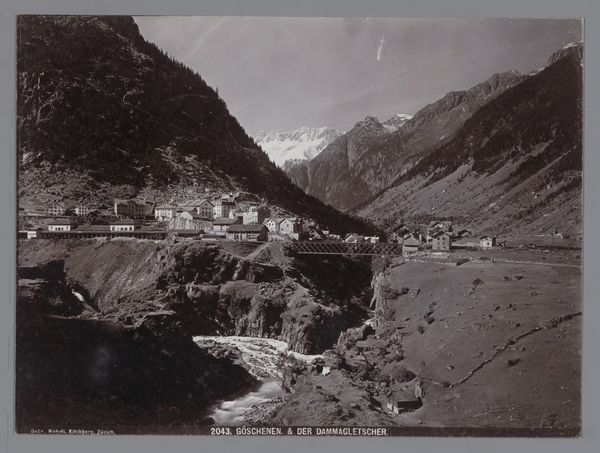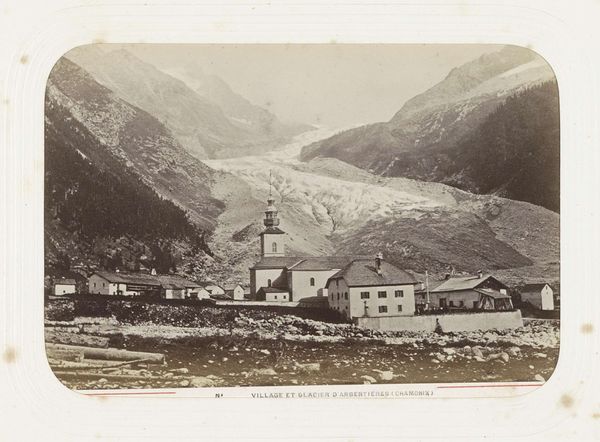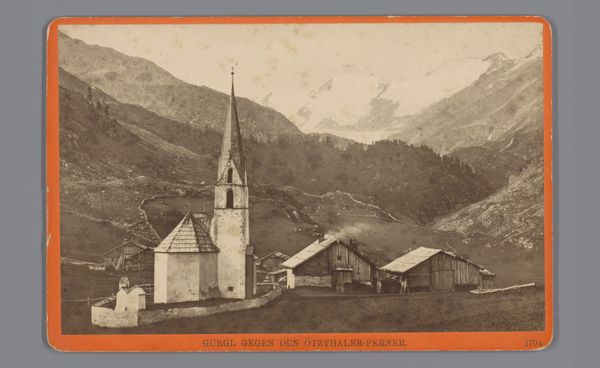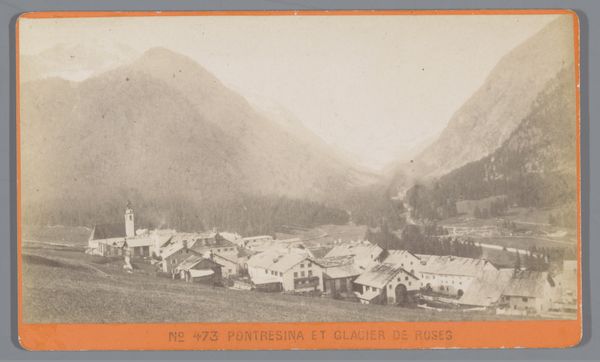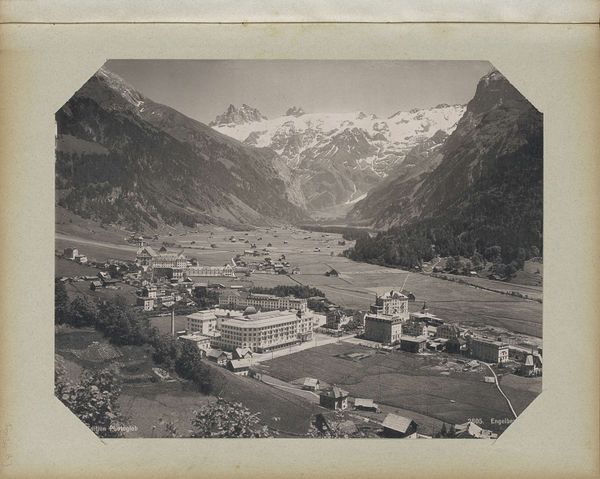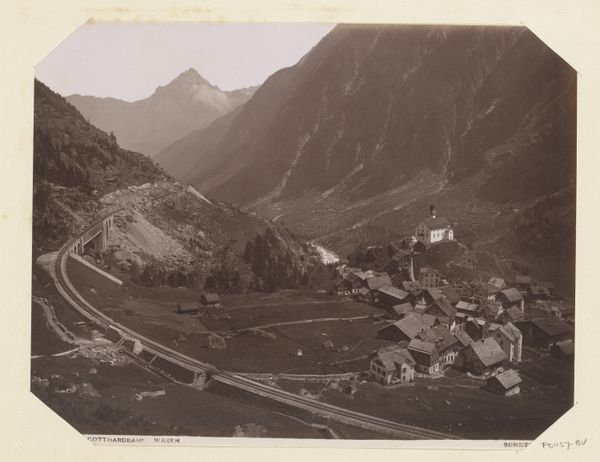
photography, gelatin-silver-print
#
pictorialism
#
landscape
#
photography
#
mountain
#
gelatin-silver-print
#
19th century
#
cityscape
#
charcoal
Dimensions: height 98 mm, width 145 mm
Copyright: Rijks Museum: Open Domain
Editor: So, this gelatin-silver print is a photograph titled "Gezicht op Sölden met de bergtop Brunnenkogel," placing it before 1898, and it's currently held at the Rijksmuseum. I’m struck by the composition; the way the village nestled between the mountains feels both grand and somehow small. What can you tell me about this work? Curator: Well, considering this gelatin-silver print, we must examine the processes. The mass production of photographic paper, made possible by gelatin-silver printing, drastically changed photographic practices and made images more accessible. Notice the subtle tonal range achievable with this method; how might that affect our understanding of landscape and ownership of that vista? Editor: I see what you mean. It’s less about the unique artistic vision, perhaps, and more about… the democratization of image-making and accessibility to materials. Curator: Precisely. Also, observe the label at the bottom; these firms printed these views *en masse*. This connects to the larger cultural consumption and production cycles, doesn't it? Consider, for instance, the relationship between early tourism to the Alps and the availability of images like these. Editor: Ah, so it’s about more than just scenery. It is connected to how people travel and see places. Do you mean this image exists *because* people now consume the Alps as a tourist destination? Curator: Exactly! This challenges that common perception of photographs as “objective” documents. Instead, consider its function as a manufactured commodity within specific social and economic circumstances. Also, consider the worker in the gelatin-silver factory. Editor: So, to understand it, we need to see it within that frame—the entire production chain and the social forces driving it. It makes you wonder about labor conditions and manufacturing. Thank you. Curator: A perspective, I hope, that will enrich all future viewings.
Comments
No comments
Be the first to comment and join the conversation on the ultimate creative platform.
